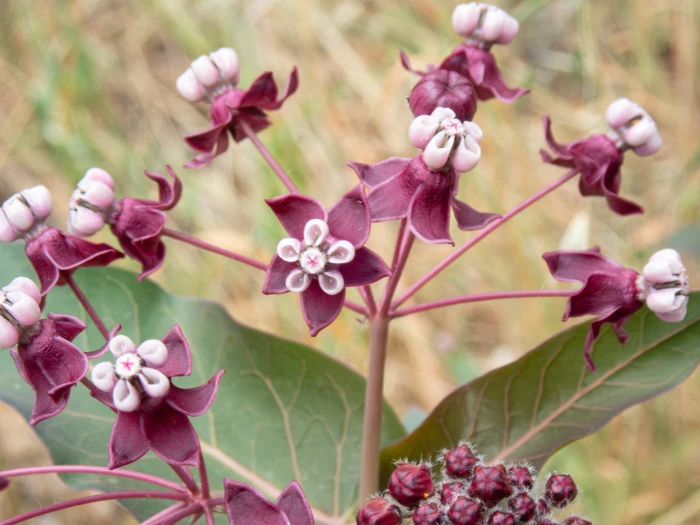Heart-Leaf Milkweed
(Asclepias cordifolia)
Heart-Leaf Milkweed (Asclepias cordifolia)
/
/

Don Loarie
CC BY 4.0
Image By:
Don Loarie
Recorded By:
Copyright:
CC BY 4.0
Copyright Notice:
Photo by: Don Loarie | License Type: CC BY 4.0 | License URL: http://creativecommons.org/licenses/by/4.0/ | Rights Holder: Don Loarie | Publisher: iNaturalist | Date Created: 2023-05-27T17:05:42-07:00 |




















Estimated Native Range
Climate Requirements for Barstow, California
| This Plant | Your Site | Plant Suitability for Your Location | ||
|---|---|---|---|---|
| • Precipitation | 7" - 85" | 4" | Your precipitation may be insufficient for this plant. Irrigate N" / year. | Irrigate N" / year |
| • High Temp. | 70°F - 101°F | 102°F | Your summers may be too hot for this plant. | Too hot |
| • Low Temp. | 11°F - 40°F | 32°F | Your winter temperatures are normal for this plant | Excellent |
This plant should grow well at your location with about N inches per year (Y minutes per month) of irrigation.
Summary
Asclepias cordifolia, commonly known as Heart-leaf Milkweed, is a perennial herb native to the western United States, specifically found in the Sierra Nevada and Cascade ranges at elevations between 164-6562 feet. It is adapted to a variety of habitats including open woodlands, forest edges, and rocky slopes. The plant typically reaches 1 to 2 feet in height and is characterized by its distinctive heart-shaped leaves and clusters of dark red-purple flowers that bloom from late spring to early summer. The flowers are quite showy and attract a variety of pollinators, especially butterflies.
Heart-leaf Milkweed is valued for its ecological role, particularly as a vital food source for monarch butterfly caterpillars. In addition to its wildlife benefits, it is also appreciated for its ornamental qualities in native plant gardens and restoration projects. It is drought-tolerant and thrives in well-drained soils, preferring full sun to partial shade. While it is not commonly used in traditional horticulture, it can serve as an accent plant in xeriscaping. Gardeners should be aware that, like other milkweeds, it contains toxic compounds that can be harmful if ingested. It is also susceptible to root rot if overwatered or planted in poorly drained soils.CC BY-SA 4.0
Heart-leaf Milkweed is valued for its ecological role, particularly as a vital food source for monarch butterfly caterpillars. In addition to its wildlife benefits, it is also appreciated for its ornamental qualities in native plant gardens and restoration projects. It is drought-tolerant and thrives in well-drained soils, preferring full sun to partial shade. While it is not commonly used in traditional horticulture, it can serve as an accent plant in xeriscaping. Gardeners should be aware that, like other milkweeds, it contains toxic compounds that can be harmful if ingested. It is also susceptible to root rot if overwatered or planted in poorly drained soils.CC BY-SA 4.0
Plant Description
- Plant Type: Herb
- Height: 1-2 feet
- Width: 1.5-3 feet
- Growth Rate: Moderate
- Flower Color: Purple, Red
- Flowering Season: Spring, Summer
- Leaf Retention: Deciduous
Growth Requirements
- Sun: Full Sun, Part Shade
- Water: Low, Medium
- Drainage: Fast, Medium
Common Uses
Butterfly Garden, Deer Resistant, Drought Tolerant, Low Maintenance
Natural Habitat
Native to open woodlands, forest edges, and rocky slopes within the Sierra Nevada and Cascade ranges
Other Names
Common Names: Purple Milkweed
Scientific Names: Asclepias cordifolia, Acerates atropurpurea, Acerates cordifolia, Asclepias acornuta, Asclepias ecornuta, Asclepias ecornuta, Gomphocarpus cordifolius, Gomphocarpus cordifolius
GBIF Accepted Name: Asclepias cordifolia